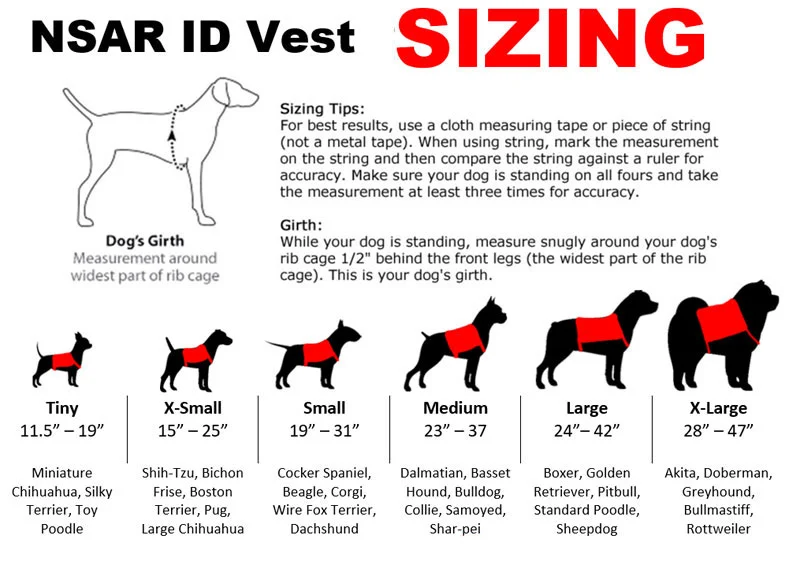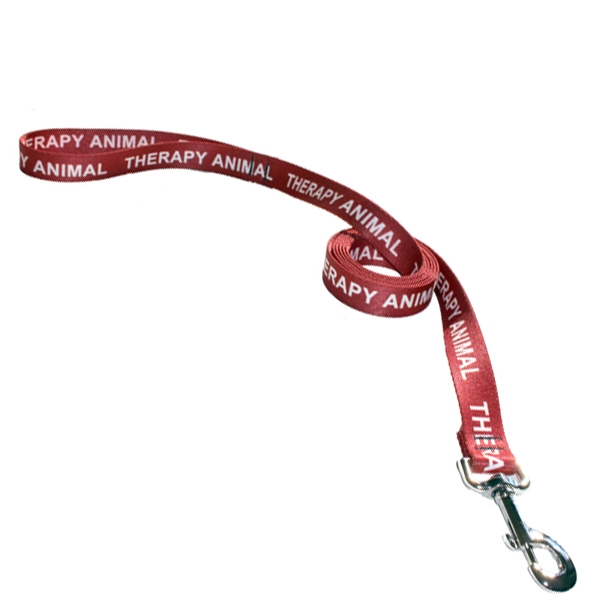General Information About Therapy Animals
A therapy animal is an animal that is trained to provide comfort, affection, and support to people in various settings, such as hospitals, nursing homes, schools, and rehabilitation centers. Unlike service animals that are trained to perform specific tasks for individuals with disabilities, therapy animals are trained to offer emotional and psychological support to groups of people. Additionally, therapy animals are different than emotional support animals that focus their comfort and affection to their handler.
Therapy animals can be of various species, including dogs, cats, rabbits, horses, and even smaller animals like guinea pigs. The most common therapy animals are dogs, known as therapy dogs. These animals must undergo training and evaluation to ensure they have the appropriate temperament, behavior, and socialization skills to interact safely and positively with a diverse range of people.
Key characteristics and aspects of therapy animals include:
- Temperament: Therapy animals should have a calm, friendly, and gentle temperament. They must be comfortable and well-behaved in various environments and around different individuals.
- Training: While therapy animals are not required to perform specific tasks like service animals, they undergo basic obedience training. This training helps ensure they respond appropriately to their handler’s commands and behave well in various situations.
- Certification: Many therapy animals are certified through reputable therapy animal organizations. Certification often involves an assessment of the animal’s behavior, training, and suitability for therapy work.
- Handler Involvement: Therapy animals are typically accompanied by their handlers, who are responsible for guiding and supervising the animal during interactions. Handlers play a crucial role in facilitating positive and safe experiences.
- Settings: Therapy animals visit a variety of settings, including hospitals, schools, nursing homes, and disaster-stricken areas. Their presence is intended to provide emotional support and companionship to individuals facing various challenges.
Therapy animals contribute to the well-being of individuals by promoting relaxation, reducing stress, and providing a sense of comfort. Interactions with therapy animals have been shown to have positive effects on both physical and mental health. It’s important to note that therapy animals, unlike service animals, do not have legal rights to access public places, and their presence is typically arranged through organized therapy programs or facilities.
The primary tasks or activities performed by therapy animals involve interactions with people in various settings. Here are some common tasks or activities that therapy animals may engage in:
- Providing Comfort: Therapy animals are trained to offer comfort and companionship to individuals who may be experiencing stress, anxiety, or emotional distress. Simply petting or spending time with a therapy animal can have calming effects.
- Reducing Stress: Interactions with therapy animals have been shown to reduce stress levels and promote relaxation. This can be particularly beneficial in healthcare settings, such as hospitals or clinics.
- Offering Distraction: In situations where individuals may be facing challenging or distressing circumstances, therapy animals provide a positive and uplifting distraction. This can be especially helpful in environments like rehabilitation centers or disaster response situations.
- Facilitating Social Interactions: Therapy animals often serve as social catalysts, encouraging communication and interaction among people. This is particularly valuable in settings such as schools or nursing homes where individuals may benefit from increased social engagement.
- Boosting Mood: Spending time with therapy animals has been linked to improved mood and increased feelings of happiness. This is beneficial for individuals experiencing depression or loneliness.
- Providing a Sense of Normalcy: In healthcare settings, therapy animals can help create a more home-like and comforting atmosphere. This can contribute to a sense of normalcy for patients undergoing medical treatments.
Assisting with Physical Therapy: In some cases, therapy animals may be involved in activities that complement physical therapy sessions. For example, a therapist may use a therapy dog to motivate a patient to engage in exercises.
Learn how to enroll your dog as a Therapy Animal at no cost: Enjoy complimentary registration with National Service Animal Registry. Input your dog’s details and upload a photo of your furry companion. After completing these steps, your dog will be officially registered in the National Service Animal Registry database.
Therapy animals can be various species, and the choice often depends on the preferences of the individual seeking therapy and the specific setting in which the therapy animal will work. Commonly used therapy animals include:
- Dogs: Dogs are the most common therapy animals. They are known for their sociable nature, ability to bond with humans, and versatility in different settings. Various breeds and sizes can serve as therapy dogs.
- Cats: Cats with calm and friendly temperaments can also be effective therapy animals. Their presence can be soothing, and they are suitable for environments where a smaller and more independent animal is preferred.
- Rabbits: Rabbits are gentle animals that can provide comfort and companionship. They are often used in settings where a smaller and quieter animal is desired, such as nursing homes or schools.
- Guinea Pigs: Similar to rabbits, guinea pigs are small and gentle animals that can be well-suited for therapy work, particularly with children. Their soft fur and calm demeanor make them comforting companions.
- Horses: Equine-assisted therapy, also known as therapeutic horseback riding or hippotherapy, involves interactions with horses to promote emotional and physical well-being. Horses are used in various therapeutic settings, including rehabilitation centers and programs for individuals with disabilities.
- Birds: Birds, such as parrots or cockatoos, are used in some therapy programs. Their social nature and ability to mimic sounds can make them engaging companions.
- Dolphins: Dolphin-assisted therapy is a specialized form of therapy that involves interactions with dolphins. This type of therapy is often used for individuals with disabilities or special needs.
- Miniature Horses: Some individuals with allergies or space constraints may choose miniature horses as therapy animals. These small horses are trained to provide comfort and companionship.
It’s essential to note that the suitability of an animal as a therapy animal depends on its individual temperament, behavior, and training.
Public Access with Your Therapy Animal
Where Are Therapy Animals Allowed?
Therapy animals do not have the same legal access rights as service animals under the Americans with Disabilities Act (ADA) in the United States. As a result, the public access for therapy animals is more limited, and it generally depends on the policies of individual establishments or facilities.
Here are some common places where therapy animals may be allowed, but it's important to note that permission can vary:
Hospitals and Healthcare Facilities
Many hospitals and healthcare facilities have therapy animal programs, and therapy animals may be permitted in designated areas to provide comfort and companionship to patients.
Nursing Homes and Assisted Living Facilities
Therapy animals are often welcome in nursing homes and assisted living facilities to interact with residents and offer emotional support.
Schools and Universities
Some educational institutions have therapy animal programs, and therapy animals may be allowed in certain areas to support students and staff.
Libraries
Some libraries host therapy animal reading programs, where children can read to therapy animals. In such cases, therapy animals may be allowed in specific library areas.
Airports
Some airports have programs that bring therapy animals into specific areas to provide comfort to travelers. However, policies vary, and access may be limited to certain areas.
Disaster and Crisis Response
Therapy animals may be deployed to disaster or crisis response situations to provide emotional support to individuals affected by traumatic events.
Rehabilitation Centers
Therapy animals may visit rehabilitation centers to interact with individuals undergoing physical or occupational therapy.
Community Events and Festivals
Some community events or festivals may welcome therapy animals in designated areas to provide a positive and calming presence.
It’s crucial for individuals with therapy animals and their handlers to seek permission and adhere to the policies of each specific location. Always check with the establishment or event organizer in advance to ensure that therapy animals are allowed and to understand any specific requirements or restrictions.
Therapy Animal Housing Rights
Therapy animals, on the other hand, are not granted the same legal protections under the Fair Housing Act. While some landlords may choose to allow therapy animals in their properties, they are not required to do so by law.
It's important to differentiate between service animals and therapy animals:
Service Animals
- Service animals are specifically trained to perform tasks for individuals with disabilities, and they are protected by the Americans with Disabilities Act (ADA) and the FHA.
- Service animals are allowed to accompany their owners in housing regardless of no-pet policies, and landlords are generally required to make reasonable accommodations for them.
Therapy Animals
- Therapy animals are trained to provide emotional support and companionship to individuals, but they do not have the same legal rights as service animals.
- Individuals with therapy animals may request accommodations, but landlords are not legally obligated to grant them, and the accommodation is generally at the discretion of the property owner.
If you have a therapy animal and are seeking housing accommodations, it's advisable to:
Communicate with the Landlord
Speak with your landlord about your therapy animal and explain the therapeutic benefits it provides. Some landlords may be willing to make accommodations even though they are not legally required to do so.
Provide Documentation
Offer documentation from a licensed mental health professional that supports the therapeutic need for the animal. While this may not be legally required, it can help in explaining the situation to the landlord.
Seek Legal Advice
If you encounter difficulties, it may be advisable to seek legal advice to understand the specific laws and regulations in your jurisdiction and explore possible options.
Therapy Animal Airline Rights
Unlike service dogs, therapy animals do not have the same privileges to fly in the aircraft cabin for free. When traveling with a therapy animal, individuals should refer to the airline’s pet policies and procedures for relevant information, as these may vary.
Trusted by over 215,000+
pet owners for 25+ years
Read what some of them say about us.
4.8 out of 5.0
4.8/5 Ratings based on 1712+ reviews






